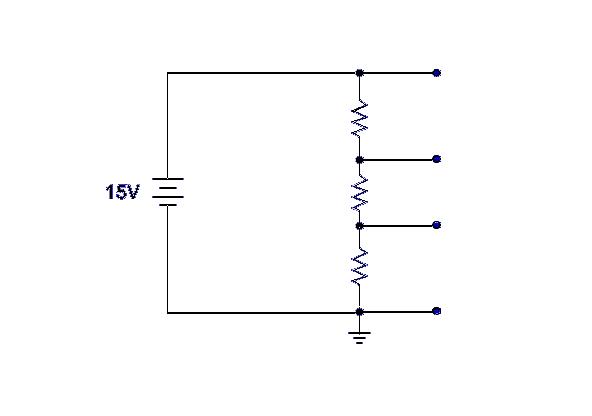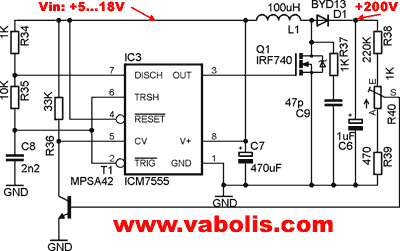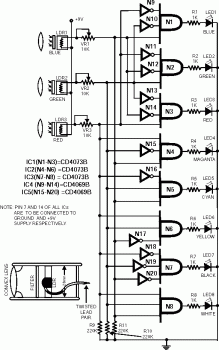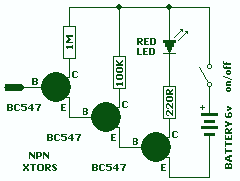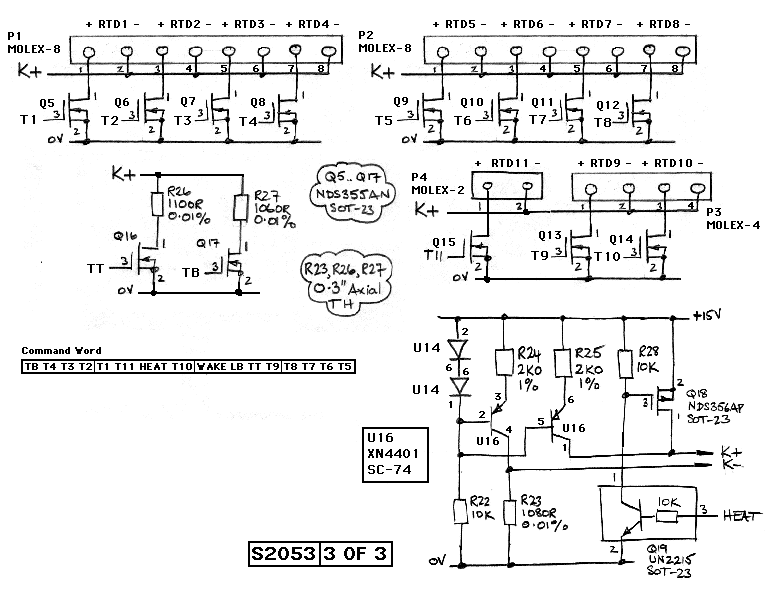
Isolated Voltage Sensor
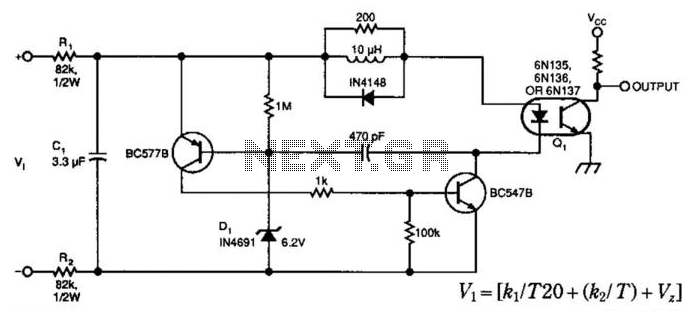
A simple voltage-controlled oscillator (VCO), coupled to instrumentation by an optoisolator, allows for the measurement of high voltages. The component values are suitable for a 0 to 600 V input range, with power dissipation in resistors RI and R2 setting a limit on the input voltage range. The circuit's linearity is not a concern, as the output can be linearized through software. The input voltage (V) charges capacitor CI until zener diode D1 conducts, triggering an "avalanche" circuit that discharges CI into optocoupler Q1. After CI discharges, the charging cycle repeats. CI also averages the sensed voltage level, providing noise immunity. The optocoupler's output is a pulse train whose frequency increases with rising input voltage. To develop a linearizing equation for the circuit, the output should be measured at two widely spaced input voltages. The resulting periods can then be plugged into a second-order polynomial approximation to solve for the two constants, k1 and k2, where Vz is the zener voltage of D1.
The voltage-controlled oscillator (VCO) circuit described is designed for high-voltage measurement applications, specifically within a range of 0 to 600 volts. The circuit employs an optoisolator, which provides electrical isolation between the high-voltage measurement section and the instrumentation, ensuring safety and protecting sensitive components.
At the core of the VCO circuit is capacitor CI, which plays a crucial role in both charging and averaging the input voltage. As the input voltage (V) increases, CI charges until the voltage across it reaches the breakdown voltage of zener diode D1. Once D1 conducts, it activates an avalanche circuit that rapidly discharges CI into the input of optocoupler Q1. This discharge event generates a pulse that corresponds to the input voltage level.
The design also incorporates resistors RI and R2, which limit the current flowing through the circuit and help define the input voltage range. The power dissipation across these resistors is a critical factor that determines the maximum allowable input voltage. The averaging effect provided by CI enhances the circuit's noise immunity, ensuring that transient voltage spikes do not affect the accuracy of the measurement.
The output from the optocoupler is a pulse train whose frequency is directly proportional to the input voltage, allowing for easy interpretation of the voltage level. To achieve linearity in the output signal, a software-based linearization approach is recommended. This involves measuring the pulse frequency output at two distinct input voltage levels, which allows for the establishment of a polynomial relationship between the input voltage and output frequency.
By utilizing the measured periods from these two input levels, a second-order polynomial can be formulated, and the constants k1 and k2 can be determined. This polynomial will provide a linear approximation of the VCO output, making it suitable for various applications that require accurate high-voltage measurements. The zener voltage Vz of diode D1 is also essential in defining the operational characteristics of the circuit, influencing both the charging and discharging cycles of capacitor CI. Overall, this VCO design is a robust solution for high-voltage measurement, combining safety, accuracy, and flexibility through software linearization. A simple voltage-controlled oscillator (VCO), coupled to your instrumentation by an optoisolator, allows you to mea sure high voltages. The component values suit a 0- to 600-V input range (power dissipation in RI and R2 set a limit on the input-voltage range). The circuit"s linearity is not an issue, because you can linearize its output in software. The input voltage (V), charges capacitor CI until zener diode D1 conducts. Then, the zener diode triggers an "avalanche" circuit that discharges CI into optocoupler Ql. After CI discharges, the charging cycle repeats. CI also averages the sensed-voltage level, which thereby provides noise immunity. The optocoupler"s output is a pulse train whose frequency increases with increasing input voltage. To develop a linearizing equation for the circuit, measure its output at two convenient, widely spaced input voltages.
Then plug the resulting periods into this second-order polynomial approximation and solve the two simultaneous equations for the two constants, k1 and k2: Vz is the zener voltage of D1.
The voltage-controlled oscillator (VCO) circuit described is designed for high-voltage measurement applications, specifically within a range of 0 to 600 volts. The circuit employs an optoisolator, which provides electrical isolation between the high-voltage measurement section and the instrumentation, ensuring safety and protecting sensitive components.
At the core of the VCO circuit is capacitor CI, which plays a crucial role in both charging and averaging the input voltage. As the input voltage (V) increases, CI charges until the voltage across it reaches the breakdown voltage of zener diode D1. Once D1 conducts, it activates an avalanche circuit that rapidly discharges CI into the input of optocoupler Q1. This discharge event generates a pulse that corresponds to the input voltage level.
The design also incorporates resistors RI and R2, which limit the current flowing through the circuit and help define the input voltage range. The power dissipation across these resistors is a critical factor that determines the maximum allowable input voltage. The averaging effect provided by CI enhances the circuit's noise immunity, ensuring that transient voltage spikes do not affect the accuracy of the measurement.
The output from the optocoupler is a pulse train whose frequency is directly proportional to the input voltage, allowing for easy interpretation of the voltage level. To achieve linearity in the output signal, a software-based linearization approach is recommended. This involves measuring the pulse frequency output at two distinct input voltage levels, which allows for the establishment of a polynomial relationship between the input voltage and output frequency.
By utilizing the measured periods from these two input levels, a second-order polynomial can be formulated, and the constants k1 and k2 can be determined. This polynomial will provide a linear approximation of the VCO output, making it suitable for various applications that require accurate high-voltage measurements. The zener voltage Vz of diode D1 is also essential in defining the operational characteristics of the circuit, influencing both the charging and discharging cycles of capacitor CI. Overall, this VCO design is a robust solution for high-voltage measurement, combining safety, accuracy, and flexibility through software linearization. A simple voltage-controlled oscillator (VCO), coupled to your instrumentation by an optoisolator, allows you to mea sure high voltages. The component values suit a 0- to 600-V input range (power dissipation in RI and R2 set a limit on the input-voltage range). The circuit"s linearity is not an issue, because you can linearize its output in software. The input voltage (V), charges capacitor CI until zener diode D1 conducts. Then, the zener diode triggers an "avalanche" circuit that discharges CI into optocoupler Ql. After CI discharges, the charging cycle repeats. CI also averages the sensed-voltage level, which thereby provides noise immunity. The optocoupler"s output is a pulse train whose frequency increases with increasing input voltage. To develop a linearizing equation for the circuit, measure its output at two convenient, widely spaced input voltages.
Then plug the resulting periods into this second-order polynomial approximation and solve the two simultaneous equations for the two constants, k1 and k2: Vz is the zener voltage of D1.

